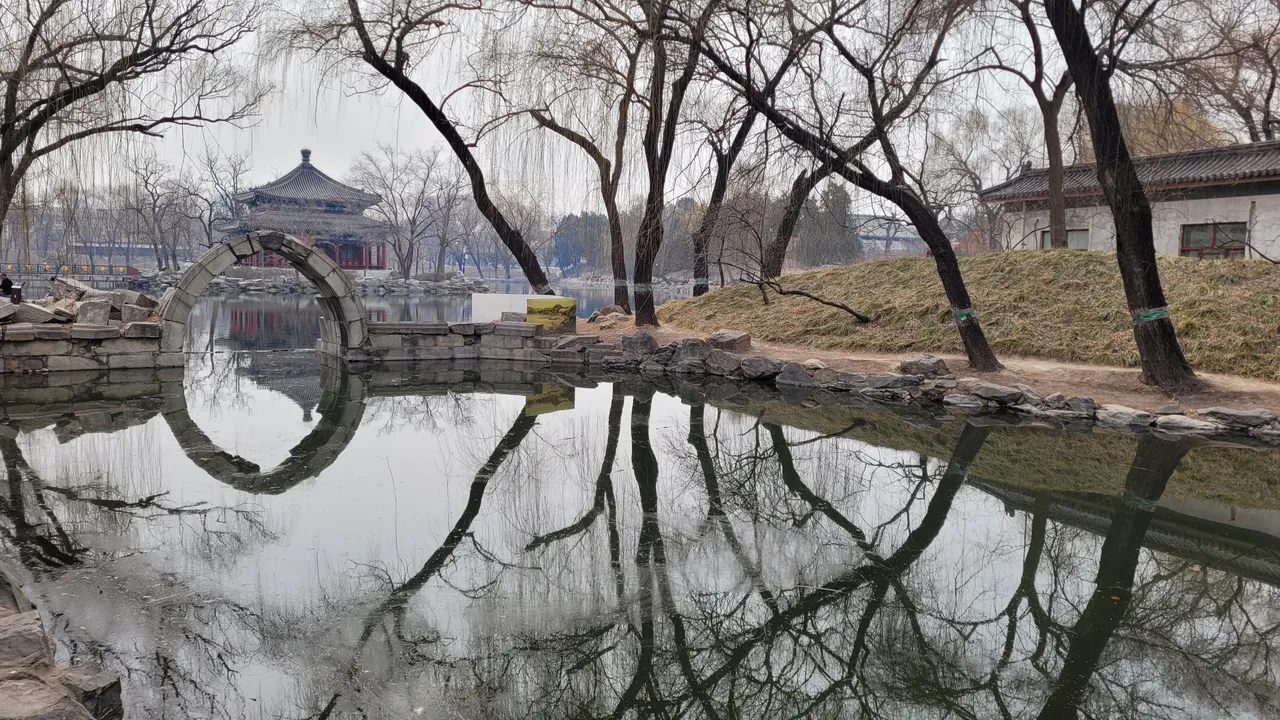 Serenity Reflections: A Tour to Yuan Ming Yuan Park
Serenity Reflections: A Tour to Yuan Ming Yuan Park
Greetings, my beloved friends in the Hive universe!
I hope you're having a good day and finding joy in every day. I had an amazing weekend because I went to one of Beijing's most visited tourist attractions, Yuan Ming Yuan Park. I haven't been to a location as breathtaking as the Long Winter is not a good time for any visit to some natural spots like this. Going outside and exploring some places like these might be really challenging. So, in this coming warmer days my current objective is to visit the remaining unexplored locations in Beijing during the late spring and early summer, which is also the ideal time to see the city's naturally beautiful locations.

I often have pleasant conversations with Hassan, a handsome Bangladeshi man currently living in China.
Hassan often shows me his family, relatives, and friends.
Hassan allowed me to join him on his interesting journey.
In particular, I felt that he made excellent observations and analyzes about the Chinese people and society!
I was very moved while reading Serenity Reflections: A Tour to Yuan Ming Yuan Park by Hassan!
So, I assumed that Hassan had genius intelligence and sensitivity!😃
I was very interested in the process of Hassan discovering and analyzing Chinese civilization!
So, I told Hassan about the feelings East Asians like me have about the civilizations of the Indian subcontinent!
Since ancient times, the civilizations of the Indian subcontinent have been mysterious and fascinating to East Asians!
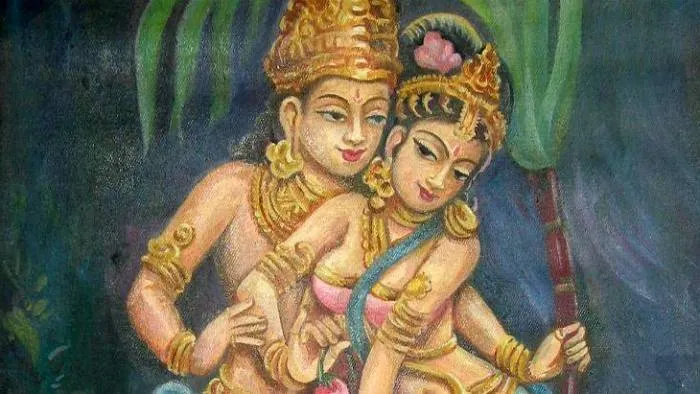
Perhaps from the perspective of a typical East Asian like me, the image of civilization on the Indian subcontinent is like the picture above!😄
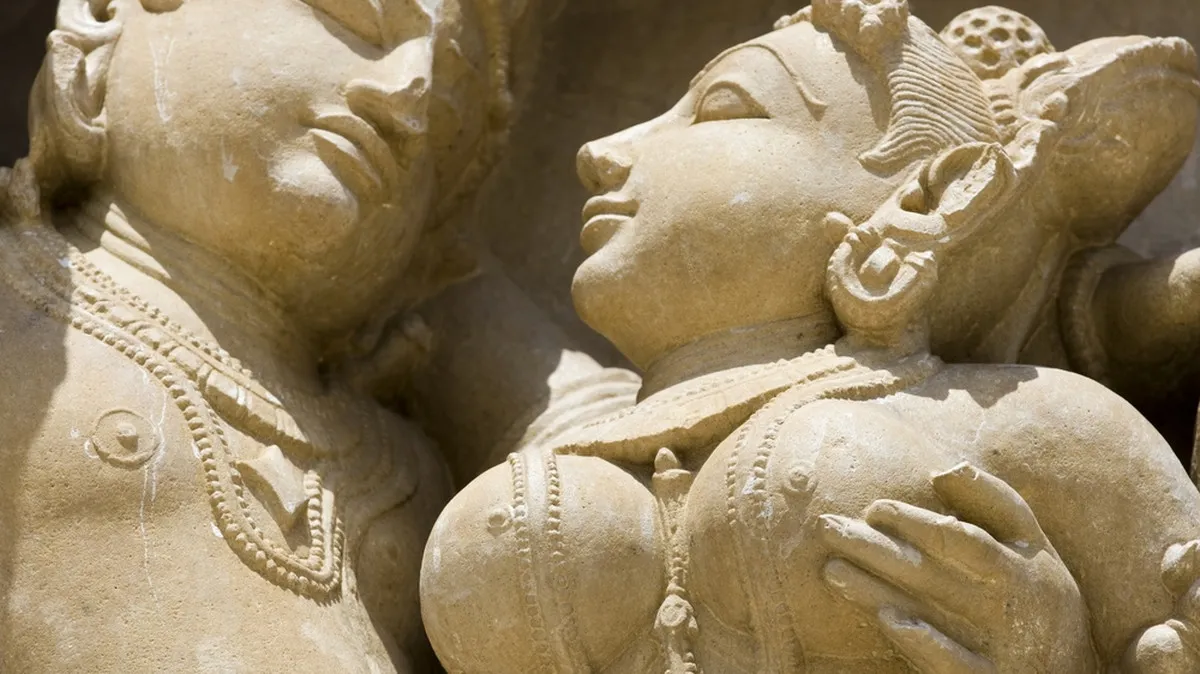
The sensual sculptures of women from the Indian subcontinent expressed in the Kamasutra have fascinated East Asian men since ancient times.
Why East Asians are fascinated by Indian civilization?
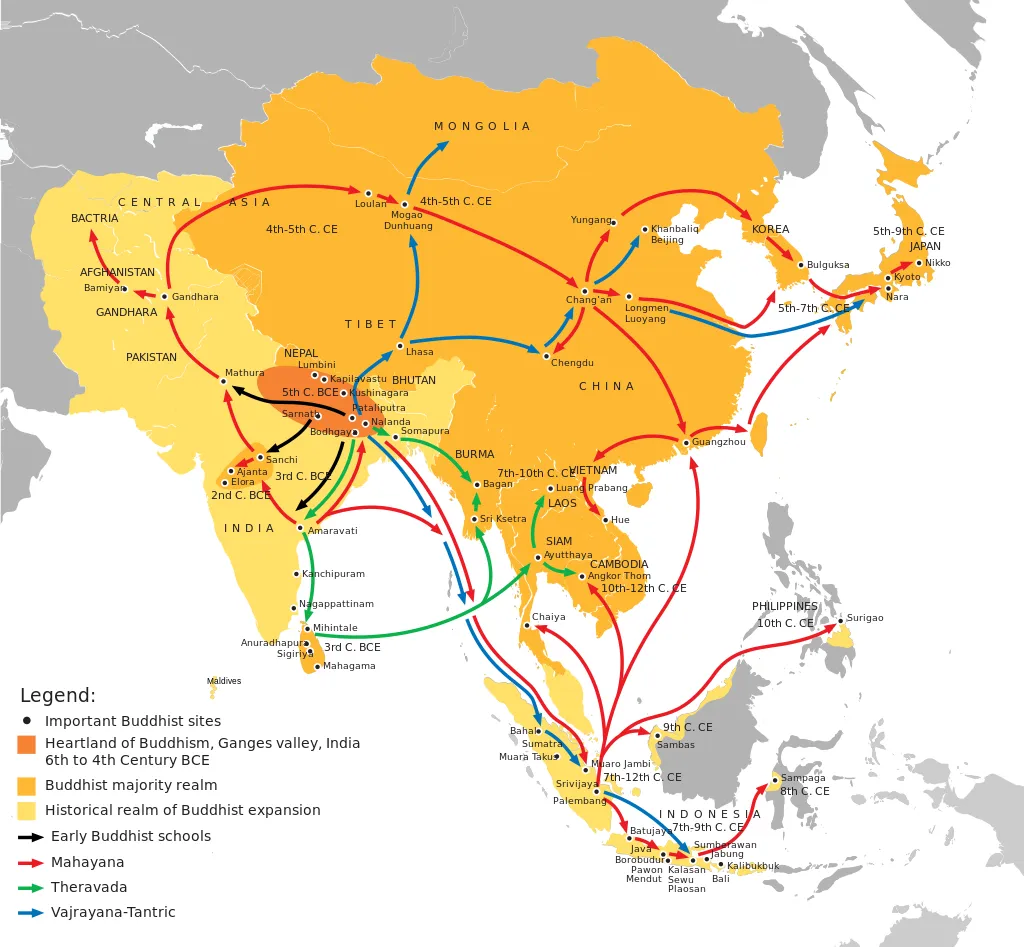 Buddhist expansion in Asia: Mahayana Buddhism first entered the Chinese Empire (Han dynasty) through the Silk Road during the Kushan Era. The overland and maritime "Silk Roads" were interlinked and complementary, forming what scholars have called the "great circle of Buddhism".[6]
Buddhist expansion in Asia: Mahayana Buddhism first entered the Chinese Empire (Han dynasty) through the Silk Road during the Kushan Era. The overland and maritime "Silk Roads" were interlinked and complementary, forming what scholars have called the "great circle of Buddhism".[6]
Chinese Buddhism or Han Buddhism (simplified Chinese: 汉传佛教; traditional Chinese: 漢傳佛教; pinyin: Hànchuán Fójiào; Jyutping: Hon3 Cyun4 Fat6 Gaau3; Pe̍h-ōe-jī: Hàn-thoân Hu̍t-kàu) is a Chinese form of Mahayana Buddhism which draws on the Chinese Buddhist canon[1] as well as numerous Chinese traditions. Chinese Buddhism focuses on studying Mahayana sutras and Mahāyāna treatises and draws its main doctrines from these sources. Some of the most important scriptures in Chinese Buddhism include: Lotus Sutra, Flower Ornament Sutra, Vimalakirtī Sutra, Nirvana Sutra, and Amitābha Sutra.[2][3] Chinese Buddhism is the largest institutionalized religion in mainland China.[4] Currently, there are an estimated 185 to 250 million Chinese Buddhists in the People's Republic of China.[4] It is also a major religion in Taiwan, Singapore, and Malaysia, as well as among the Chinese Diaspora.[2]
Buddhism was first introduced to China during the Han dynasty (206 BCE – 220 CE). It was promoted by multiple emperors, especially during the Tang dynasty (618–907), which helped it spread across the country.[5] The translation of a large body of Indian Buddhist scriptures into Chinese and the inclusion of these translations (along with Taoist and Confucian works) into a Chinese Buddhist canon had far-reaching implications for the dissemination of Buddhism throughout the East Asian cultural sphere, including Korea, Japan, and Vietnam. Chinese Buddhism also developed various unique traditions of Buddhist thought and practice, including Tiantai, Huayan, Chan Buddhism, and Pure Land Buddhism.
From its inception, Chinese Buddhism has been influenced by native Chinese religions and philosophy, especially Confucianism and Taoism, but also Chinese folk religion.
1. Chinese who went to ancient India!
Buddhism, which was born in the ancient Indian subcontinent, has now spread throughout East Asia and has become a global religion with the largest number of believers.
I am a Christian, but there are many Buddhist temples in the area where I live.
So, Buddhism is familiar to me!
However, I believe that East Asian Buddhism is now mixed with local religions and has become a completely different religion from Indian Buddhism.
Most East Asians understand the civilizations of the Indian subcontinent from a East Asian Buddhist perspective.
I want to tell my handsome brother Hassan why!😃
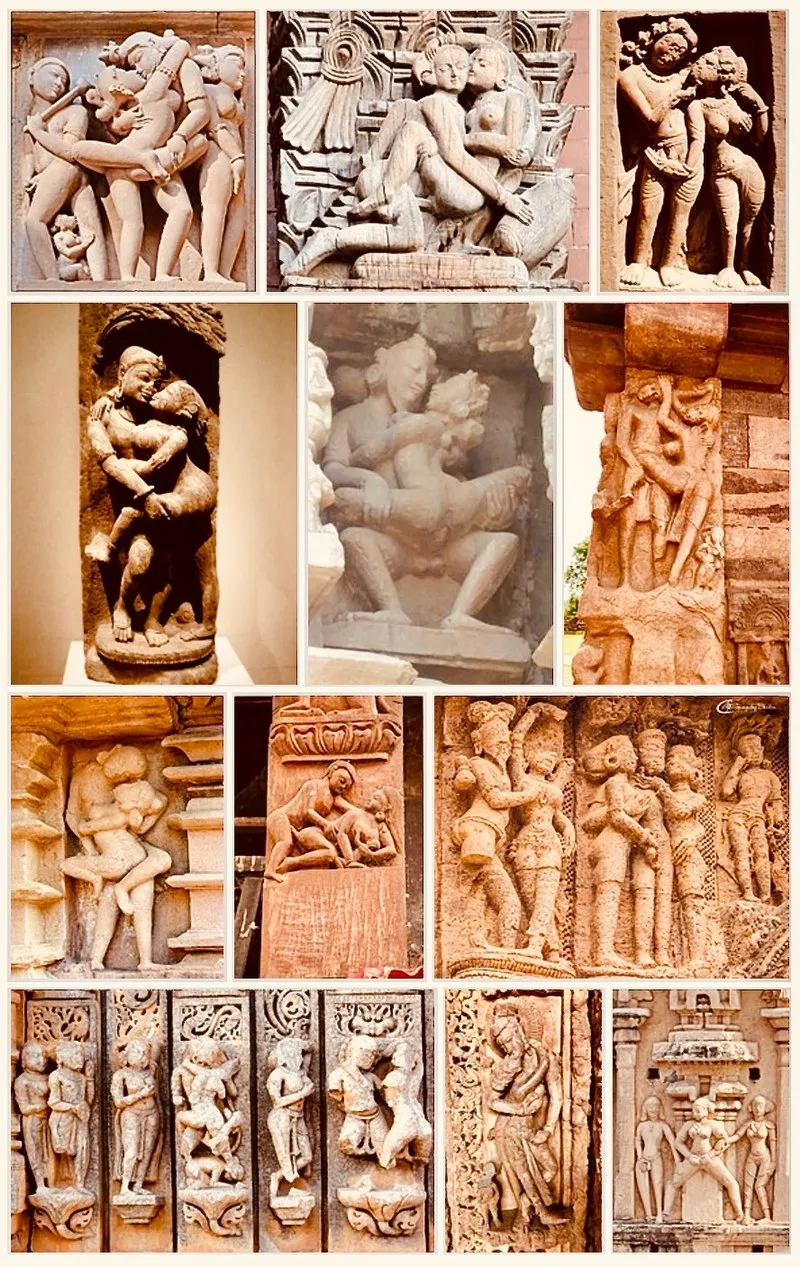 Kama-related arts are common in Hindu temples. These scenes include courtship, amorous couples in scenes of intimacy (mithuna), or a sexual position. Above: 6th- to 14th-century temples in Madhya Pradesh, Uttar Pradesh, Rajasthan, Gujarat, Karnataka, Chhattisgarh, Odisha, Tamil Nadu, Andhra Pradesh and Nepal.
Kama-related arts are common in Hindu temples. These scenes include courtship, amorous couples in scenes of intimacy (mithuna), or a sexual position. Above: 6th- to 14th-century temples in Madhya Pradesh, Uttar Pradesh, Rajasthan, Gujarat, Karnataka, Chhattisgarh, Odisha, Tamil Nadu, Andhra Pradesh and Nepal.
The Kama Sutra (/ˈkɑːmə ˈsuːtrə/; Sanskrit: कामसूत्र, pronunciationⓘ, Kāma-sūtra; lit. 'Principles of Love') is an ancient Indian[1][2] Hindu[1] Sanskrit text on sexuality, eroticism and emotional fulfillment in life.[3][4][5] Attributed to Vātsyāyana,[6] the Kama Sutra is neither exclusively nor predominantly a sex manual on sex positions,[3] but rather was written as a guide to the art of living well, the nature of love, finding a life partner, maintaining one's love life, and other aspects pertaining to pleasure-oriented faculties of human life.[3][7][8] It is a sutra-genre text with terse aphoristic verses that have survived into the modern era with different bhāṣyas (exposition and commentaries). The text is a mix of prose and anustubh-meter poetry verses. The text acknowledges the Hindu concept of Purusharthas, and lists desire, sexuality, and emotional fulfillment as one of the proper goals of life. Its chapters discuss methods for courtship, training in the arts to be socially engaging, finding a partner, flirting, maintaining power in a married life, when and how to commit adultery, sexual positions, and other topics.[9] The majority of the book is about the philosophy and theory of love, what triggers desire, what sustains it, and how and when it is good or bad.[10][11]
The idea of Indian civilization that has had the greatest influence on modern East Asians is Kamasutra!
East Asian men like me create erotic fantasies about women from the Indian subcontinent through the Kamasutra!😄
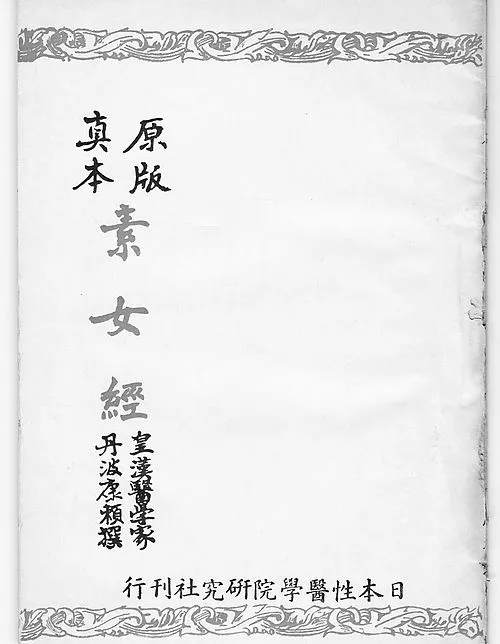 Su Nü Jing was published in 1920 in Japan
Su Nü Jing was published in 1920 in Japan
Su Nü Jing or Su Nü Ching - Classic of the White Madam (素女經), is a Chinese sexology book written before the Han dynasty. It belongs to the Chinese classics and presents the Taoist sexual practices.[1][2] According to this religious tradition, the book is said to have been written by the Goddess Sunü in the Huang Di era.
Since ancient times, Kamasutra has had a great influence on East Asian men. As they read the Kamasutra, they fell into the fantasy that they could have eternal youth and life through sexual intercourse.
So, imitating the Kamasutra, he created Su Nü Jing or Su Nü Ching - Classic of the White Madam (素女經).
How would my brother Hassan feel about the fact that East Asian men felt this way while watching the Kamasutra?😄
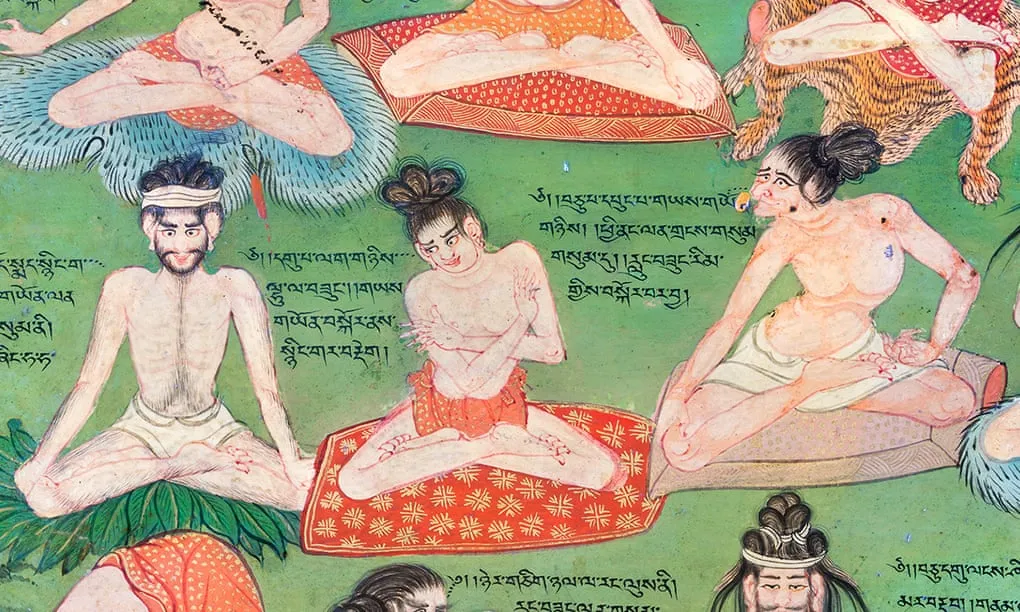 Lukhang temple is the Buddhist Sistine Chapel, full of stunning murals of body-hopping yogis and the vagina that gave birth to the world. It’s meant for the Dalai Lama’s eyes only – so how did a US photographer manage to share its secrets?
Lukhang temple is the Buddhist Sistine Chapel, full of stunning murals of body-hopping yogis and the vagina that gave birth to the world. It’s meant for the Dalai Lama’s eyes only – so how did a US photographer manage to share its secrets?
Take me to the cosmic vagina: inside Tibet's secret tantric temple
Kamasutra spread throughout East Asia, including China, gained popularity and developed into a religion.
However, with the emergence of Tantric secrets in Tibetan Buddhism, East Asian Buddhism took a new leap forward.
Tibetan and East Asian men blended Kamasutra and Tantra to create a new sex religion that my brother Hassan could never imagine.😆
While Kamasutra was absorbed into most religions in East Asia, Tantra was recognized as a new practice method among East Asian Buddhism.
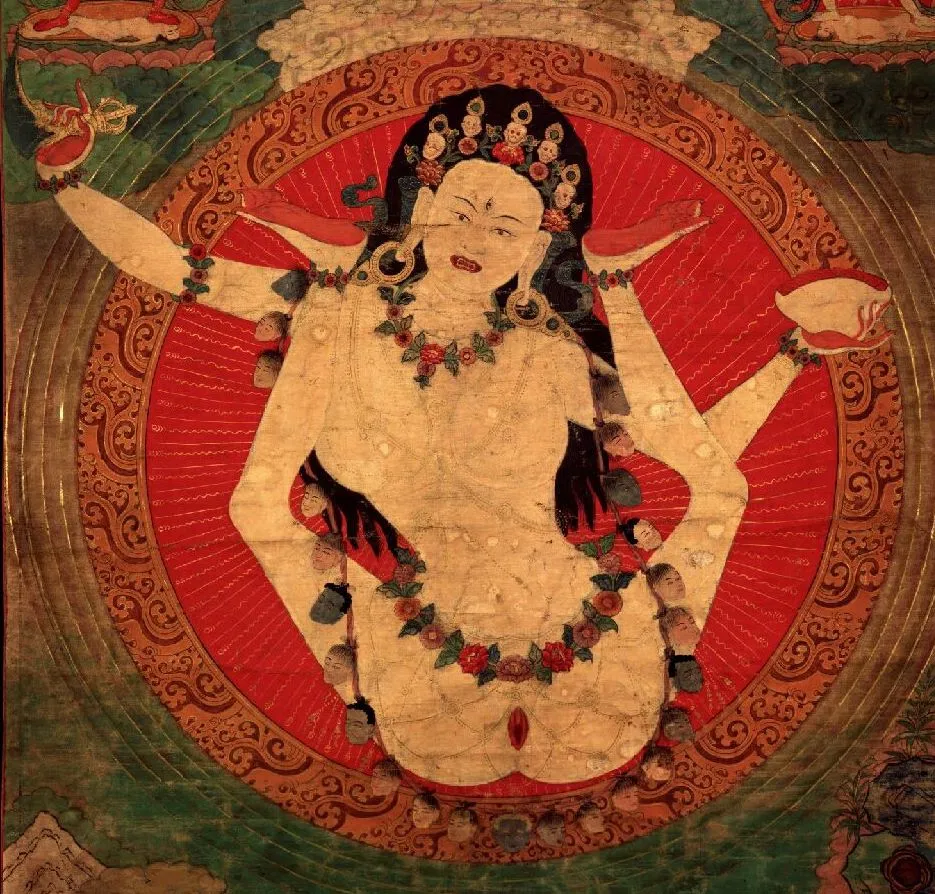
I assume that Kamasutra is a superstitious belief that relieves the sexual desires of all East Asian men, while Tantra is a sexual ritual secretly practiced by Buddhist monks.
Tibetan Buddhism claimed that monks could become gods only if they entered the cosmic vagina.
I want to ask Hassan if he knows what a cosmic vagina is.🤣
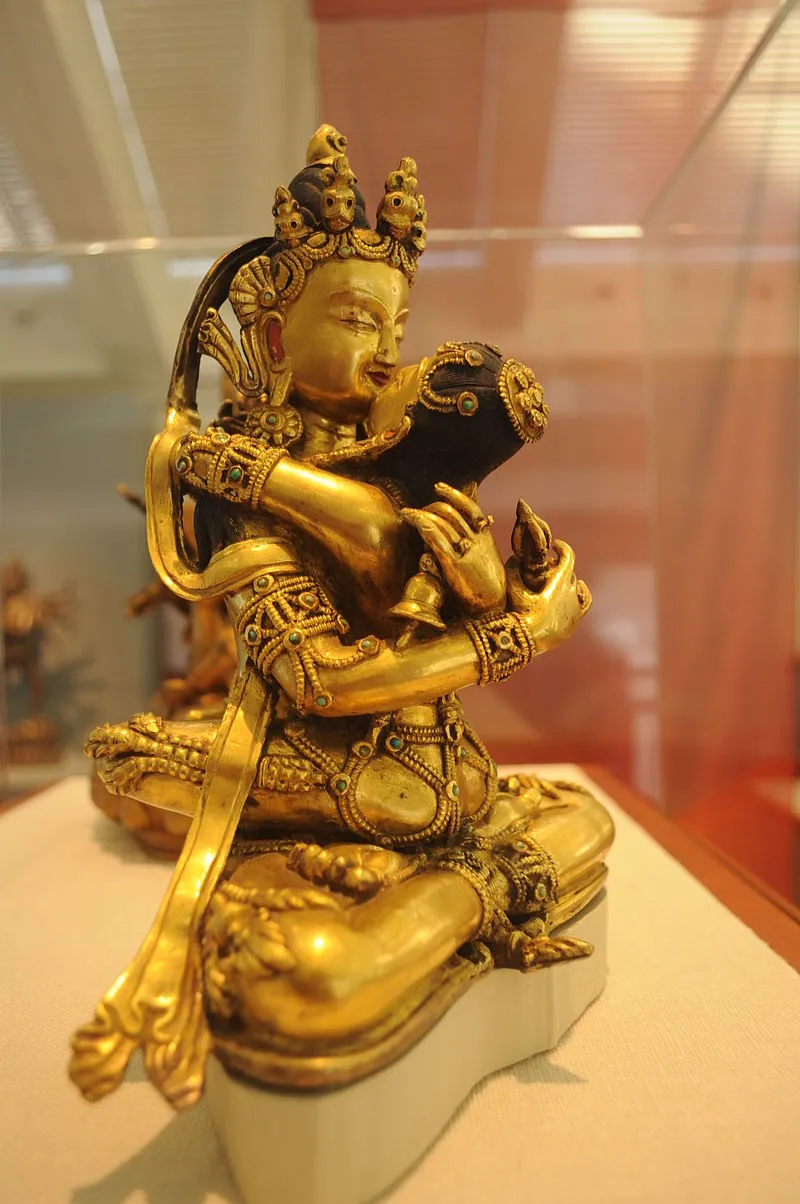
Most East Asian men like me understood this way to enter the cosmic vagina!😊
 Tantric art. Clockwise from upper left: Vajrayogini (Buddhist), Sri Yantra (Hindu), Kalachakra Mandala and Chakra illustration.
Tantric art. Clockwise from upper left: Vajrayogini (Buddhist), Sri Yantra (Hindu), Kalachakra Mandala and Chakra illustration.
Tantra (/ˈtæntrə/; Sanskrit: तन्त्र, lit. 'expansion-device, salvation-spreader; loom, weave, warp') is an esoteric yogic tradition that developed on the Indian subcontinent from the middle of the 1st millennium CE onwards in both Hinduism and Buddhism.[1]
The term tantra, in the Indian traditions, also means any systematic broadly applicable "text, theory, system, method, instrument, technique or practice".[2][3] A key feature of these traditions is the use of mantras, and thus they are commonly referred to as Mantramārga ("Path of Mantra") in Hinduism or Mantrayāna ("Mantra Vehicle") and Guhyamantra ("Secret Mantra") in Buddhism.[4][5]
In Buddhism, the Vajrayana traditions are known for tantric ideas and practices, which are based on Indian Buddhist Tantras.[6] They include Indo-Tibetan Buddhism, Chinese Esoteric Buddhism, Japanese Shingon Buddhism and Nepalese Newar Buddhism. Although Southern Esoteric Buddhism does not directly reference the tantras, its practices and ideas parallel them. In Buddhism, tantra has influenced the art and iconography of Tibetan and East Asian Buddhism, as well as historic cave temples of India and the art of Southeast Asia.[7][8][9]
Tantric Hindu and Buddhist traditions have also influenced other Eastern religious traditions such as Jainism, the Tibetan Bön tradition, Daoism, and the Japanese Shintō tradition.[10] Certain modes of non-Vedic worship such as Puja are considered tantric in their conception and rituals. Hindu temple building also generally conforms to the iconography of tantra.[note 1][11] Hindu texts describing these topics are called Tantras, Āgamas or Samhitās.[12][13]
Most East Asian men, including myself, understood and accepted the civilizations of the Indian subcontinent through the two concepts of Kamasutra and Tantra.😉
I couldn't write more nice sentences because my English writing skills were poor.
The Secret Sexual Consort of a Tibetan Buddhist Lama—the first Kalu Rinpoche
I would like to first say that since this article is my personal research, there is a possibility of errors and misunderstandings.
I hope Hassan will not feel offended or misunderstood after reading my awkward English sentences!😃
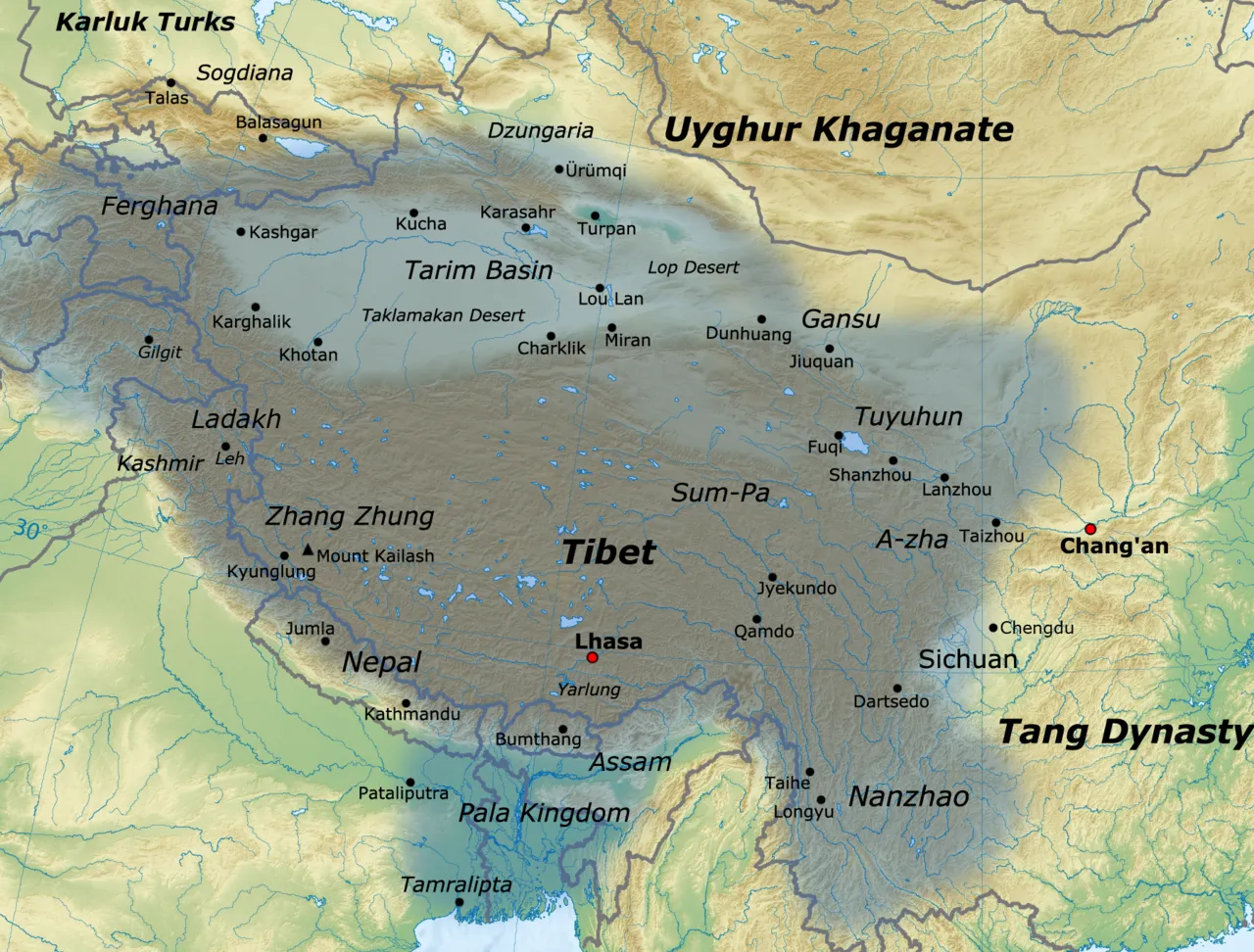 Map of the Tibetan Empire at its greatest extent between the 780s and the 790s CE
Map of the Tibetan Empire at its greatest extent between the 780s and the 790s CE
Tibetan Buddhism[note 1] is a form of Buddhism practiced in Tibet, Bhutan and Mongolia. It also has a sizable number of adherents in the areas surrounding the Himalayas, including the Indian regions of Ladakh, Sikkim, and Arunachal Pradesh, as well as in Nepal. Smaller groups of practitioners can be found in Central Asia, Xinjiang, Inner Mongolia, and some regions of Russia, such as Tuva, Buryatia, and Kalmykia.